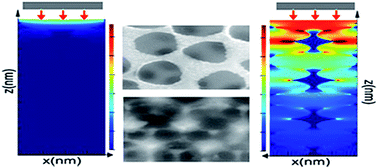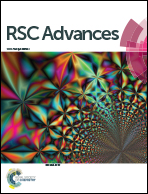Photonic band gaps and plasmonic behavior of Ag inverse opals with different Ag filling fractions prepared by electrochemical etching†
Abstract
Nanophotonic microstructures that can be fabricated using simple processes have attracted much recent attention, because they have unique characteristics and support advanced phenomena including photonic band gaps (PBGs), surface plasmonic polaritons (SPPs), and localized surface plasmon resonances. Three-dimensional (3D) inverse opals made of low optical-loss metallic Ag can potentially achieve all of these beneficial characteristics of nanophotonic materials. However, the current optical performances of Ag inverse opals are often determined by their surface morphologies rather than their 3D structures, because they contain a high metal filling fraction and have relatively high surface reflectances. In this work, 3D Ag photonic crystals were fabricated with different filling fractions using electrochemical deposition and etching. The effects of the electrochemical fabrication processes on the products' microstructures were determined. An Ag inverse opal with a low metal filling fraction exhibited both a PBG and SPPs in its reflection spectra. The optical properties of Ag inverse opals with different filling fractions and inverse opals prepared using colloidal crystal templates with different microsphere diameters were determined experimentally and through simulations. The Ag inverse opals with low filling fractions were also successfully used as ethanol sensors by harnessing the optical responses related to their PBGs and SPPs.


 Please wait while we load your content...
Please wait while we load your content...